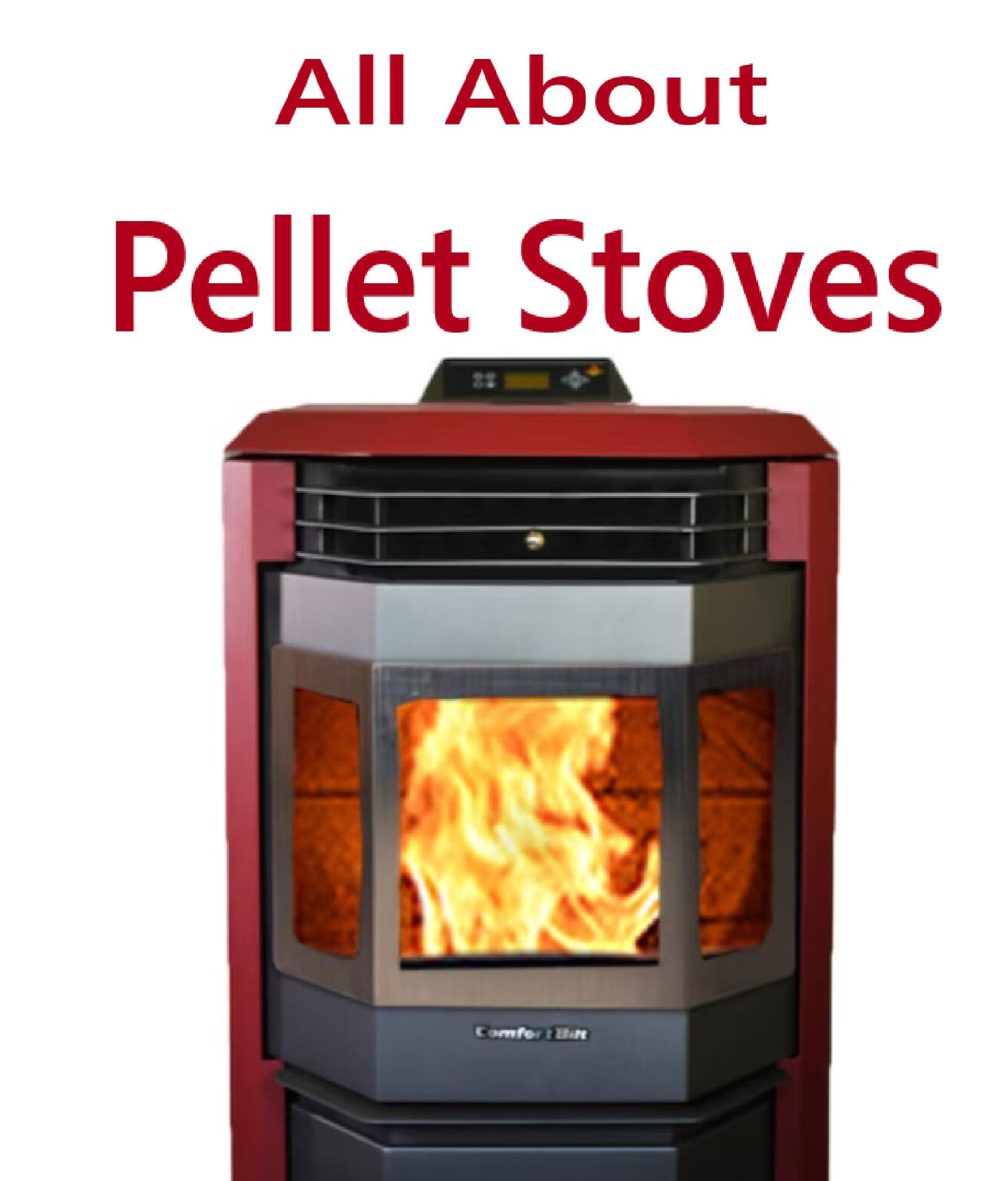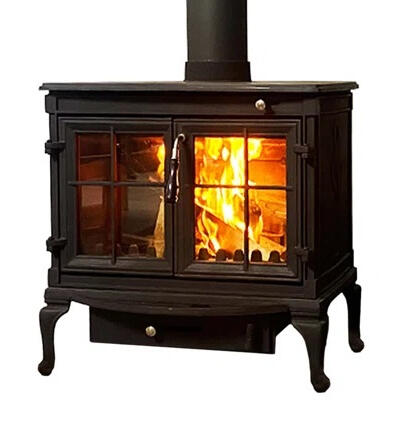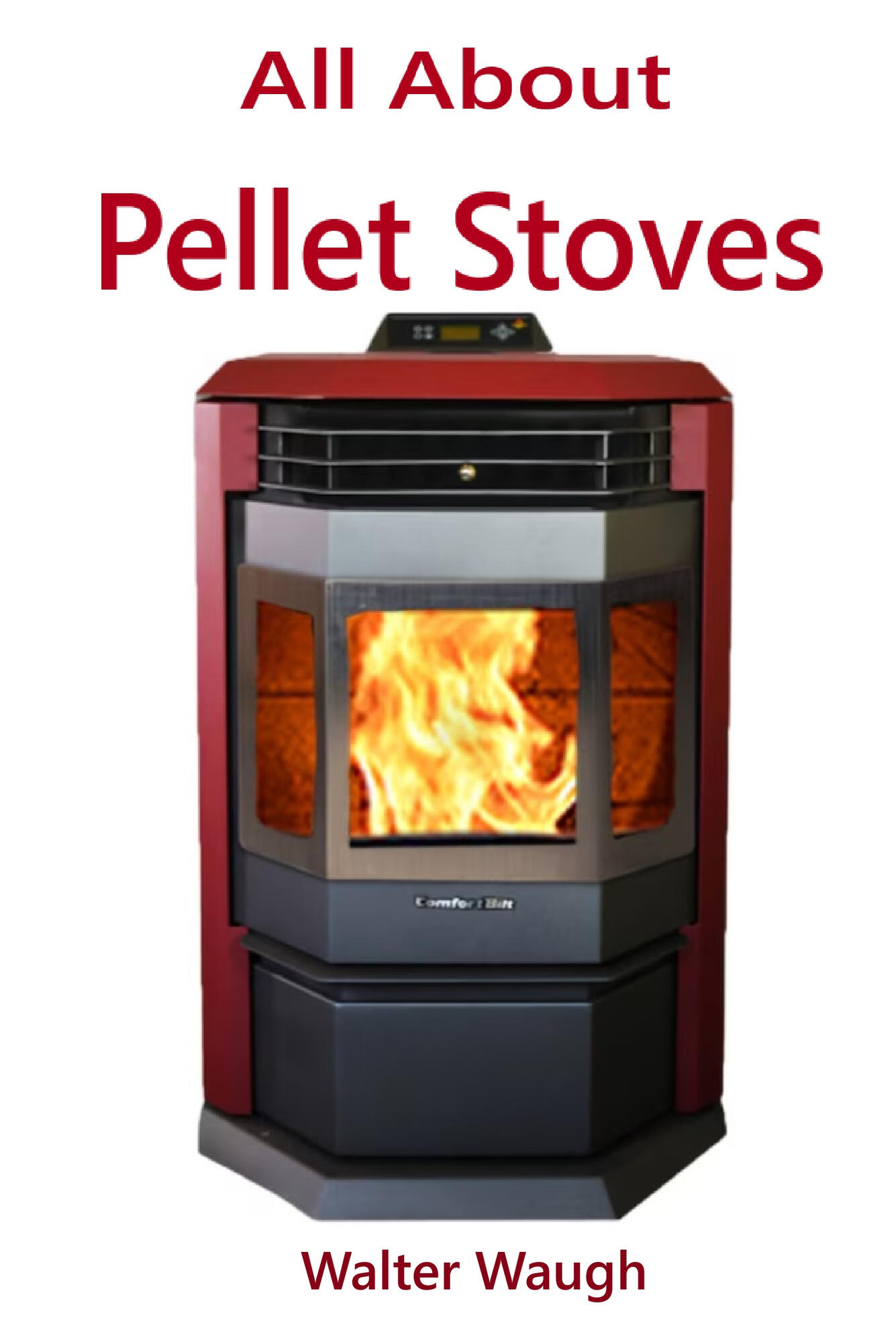Pellet Stoves: Energy Efficient Heating Solutions - Pellet Burners and Wood-Burning Stove Solutions
Efficiently heat your home with high-quality, eco-friendly pellet stoves and wood-burning stove solutions.
Get efficient and clean-burning heating solutions with our top-quality pellet stoves and wood burning stoves at Pellet-Stoves. Explore a variety of options perfect for any home, featuring energy efficiency and environmentally friendly designs.
Want more info?

Introduction to Pellet Stoves
What are Pellet Stoves?
Pellet stoves are heating devices that burn small, compressed wood or biomass pellets to produce heat. Unlike traditional wood-burning stoves, pellet stoves are highly efficient and eco-friendly. They use pellets made from compressed sawdust or wood chips, which makes them a sustainable choice for heating your home.
Why Choose a Pellet Stove?
Choosing a pellet stove offers several benefits
Heating Efficiency:
Pellet stoves are designed to be highly efficient, converting most of the fuel into usable heat.
Cost-Effective:
Pellets are generally cheaper than other heating fuels, which can help save money on heating bills.
Environmentally Friendly:
Burning pellets produces less smoke and fewer pollutants, making pellet stoves an environmentally responsible option.
Convenience:
Pellet stoves are easy to use and maintain. Many models come with automated features, such as self-ignition and pellet feeding.
Ready to Shop?
We understand that the world of pellet stoves can be complex. That’s why we’ve made a concerted effort to ensure our content is both accessible to beginners and valuable to experts. Our articles and guides are written with a balance of complexity and simplicity, ensuring they are engaging and easy to understand.

History and Evolution of Pellet Stoves
The history of pellet stoves dates back to the 1970s when they were introduced as an alternative to traditional wood-burning stoves. Initially, these stoves were basic in design, but over time, they have undergone significant advancements. Innovations in technology have improved their efficiency, convenience, and environmental impact. Today, pellet stoves incorporate modern features like digital controls and automatic feeding systems, making them more user-friendly and effective at heating spaces.Types of Pellet Stoves
Freestanding Pellet Stoves vs. Pellet Stove InsertsWhen choosing a pellet stove, you have two main options: freestanding stoves and pellet stove inserts. Freestanding pellet stoves can be placed anywhere in a room and offer versatility in installation. Pellet stove inserts, on the other hand, are designed to fit into existing fireplaces, transforming them into efficient heating sources. Both typ have their own set of advantages and considerations, depending on your heating needs and space.How Do Freestanding Pellet Stoves Work?
Freestanding pellet stoves operate by burning pellets in a specially designed burn pot. The pellets are fed into the burn pot from a hopper using an auger. As the pellets burn, they produce heat, which is then circulated through the room using a fan or blower. This mechanism allows for consistent and controlled heating, making freestanding pellet stoves a reliable choice for home heating.
Get The Book
Announcing the Book: "All About Pellet Stoves"
To complement our website launch, we are excited to unveil our eBook, "All About Pellet Stoves." This guide is a treasure trove of knowledge, designed to take you from novice to expert in the world of pellet stoves. Packed with high-perplexity content and a burst of engaging insights, this eBook is perfect for anyone eager to delve deep into the benefits and nuances of pellet stoves.

Thanks for Visiting
© 2024. Pellet-Stoves.com All rights reserved.
Thank you
You'll be hearing from us!
Comparing Pellet Stove Inserts and Traditional Fireplaces
Pellet stove inserts and traditional fireplaces both serve the purpose of heating a home, but they differ in several aspects:
- Efficiency: Pellet stove inserts are generally more efficient, converting more fuel into heat.
- Heating Cost: Using pellets can be more cost-effective than traditional firewood.
- Installation: Inserts typically require professional installation, fitting into existing fireplaces.
- Maintenance: Pellet stoves usually need less maintenance compared to traditional fireplaces.
- Heat Output: Pellet stoves tend to provide more consistent and controllable heat.
Which Type of Pellet Stove is Best for You?
Selecting the right type of pellet stove depends on various factors, such as your heating needs, budget, and personal preferences. Consider the following:
- Efficiency: Look for a stove that provides high efficiency to maximize heat output and save on fuel costs.
- Cost: Evaluate the initial investment and ongoing operating costs.
- Operation: Choose a stove with user-friendly features that suit your lifestyle.
- Space Requirements: Ensure the stove fits well in the intended heating area.
By assessing these factors, you can make an informed decision and choose the type of pellet stove that best meets your needs.
Installation and Setup
How to Install a Pellet Stove
Installing a pellet stove can give your home good heating. Here's how to do it:
- Choose the Location: Pick a spot near an exterior wall for venting. Ensure the floor is stable and strong enough to hold the stove.
- Prepare the Area: Clear away anything flammable. Use a heat-resistant floor pad if needed.
- Set Up Venting: Install the vent pipe through a nearby wall or chimney as per the manufacturer’s instructions. Use double-walled steel pipes for safety.
- Connect the Stove: Place the stove and attach it to the vent pipe. Make sure all connections are tight.
- Plug In: Connect the stove to a power outlet. Some models, like Comfortbilt, may need a dedicated circuit.
What Installation Requirements Should Be Met?
When installing a pellet stove, follow these key requirements:
- EPA Standards: Ensure the stove meets EPA rules for emissions.
- Proper Venting: Use the right type of vent pipe and follow guidelines for chimney installation.
- Clearance: Keep enough space around the stove as the manufacturer advises.
- Safety: Place smoke detectors and carbon monoxide detectors nearby.
- Floor Protection: Use a non-combustible floor pad if the stove is not on a concrete surface.
Can You Install a Pellet Stove Yourself or Should You Hire a Professional?
Wondering whether to install a pellet stove yourself or get a professional?
- DIY Installation: If you have experience with home projects and understand the requirements, you might choose to do it yourself. Just follow all safety standards.
- Hire a Professional: If DIY projects are not your thing, hire a professional. This ensures the stove is installed correctly and safely. This is important for complex setups or wood-burning fireplaces.
Step-by-Step Guide to Setting Up Your Pellet Stove
Setting up a pellet stove involves several steps. Here’s a clear guide:
- Unpack and Inspect: Unpack the stove and check for any damage.
- Position the Stove: Place the stove in its chosen spot, ensuring it meets all clearance requirements.
- Install the Vent System:
- Drill a hole through the wall where the vent will go.
- Install the vent pipe through the hole and into the chimney.
- Seal the edges to prevent leaks.
- Connect the Pipes: Attach the vent pipe to the stove and ensure a tight fit.
- Secure the Stove: Anchor the stove to the floor if required for stability.
- Plug In and Test: Plug the stove into a power outlet and test to ensure it's working properly.
Operating a Pellet Stove
How to Operate a Pellet Stove Efficiently
To run your pellet stove efficiently, follow these tips:
- Use Quality Pellet Fuel: Pick high-quality pellets that produce more BTUs and less ash.
- Adjust Settings: Use the control panel to set the heat output based on your heating needs.
- Regular Maintenance: Clean the stove and check its parts often to avoid buildup and keep efficiency high.
- Proper Ventilation: Ensure the vent system is clear to maximize heat output.
What Are the Key Features to Look for in a Pellet Stove Control Panel?
When choosing a pellet stove, look at these control panel features:
- Temperature Settings: Easy-to-adjust temperature settings for precise control.
- Timer: A built-in timer can help manage when the stove turns on and off.
- Energy Efficiency: Features that boost energy efficiency, like automatic pellet feed systems, are useful.
- Display: An easy-to-read display helps you monitor the stove’s operation.
How to Start and Stop a Pellet Stove Safely
Starting and stopping a pellet stove involves careful steps:
- To Start:
- Make sure the stove is plugged in and filled with pellets.
- Turn on the control panel and set your desired temperature.
- Let the automatic ignition system light the pellets.
- To Stop:
- Gradually lower the temperature setting on the control panel.
- Allow the stove to cool down before turning it off completely.
- Once cooled, clean out any remaining ash and pellets to keep the stove clean.
By following these steps, your pellet stove will run efficiently and safely, providing warmth and comfort all winter long.
Maintenance and Troubleshooting
Routine Maintenance for Pellet Stoves
Routine maintenance is key to keeping your pellet stove in good shape. Daily, you should check the hopper and burn pot for leftover pellets or ash. Weekly, clean the auger and exhaust vent to prevent blockages. Monthly, clean the chimney to ensure proper ventilation and safety. These steps help keep your pellet stove running efficiently and safely.
How Often Should a Pellet Stove Be Cleaned?
Cleaning your pellet stove regularly is important. Ash can build up quickly, so empty the ash pan weekly. Inspect the stove for soot buildup monthly and aim for a thorough yearly cleaning. Regular cleaning will not only extend your stove's life but also improve its performance.
Common Issues and How to Fix Them
Pellet stoves can run into common issues like error codes, blockages, and igniter or blower fan malfunctions. For blockages, check and clean the exhaust vent. If the igniter isn't working, it may need a replacement. For blower fan issues, inspect for dust or damage. Having a maintenance guide handy makes troubleshooting easier.
What Are the Indicators of a Well-Maintained Pellet Stove?
A well-maintained pellet stove shows signs of efficiency and longevity. Look for consistent heat output, low emissions, and no clinkers in the burn pot. Proper ventilation is crucial for good performance. If your stove runs smoothly without unusual sounds, it's a sign that it is well-maintained.
Fuel and Efficiency
What Type of Pellets Should You Use?
Choosing the right type of pellets is essential for best performance. Hardwood pellets are known for their high heating value and low ash production. Use pellets that meet PFI standards for quality. Premium wood pellets offer efficient burning and long-lasting heat, making them a great choice for your pellet stove.
How Much Fuel Does a Pellet Stove Consume?
The fuel consumption of a pellet stove can vary. On average, a pellet stove burns about 1-3 pounds of pellets per hour. This could mean one ton of pellets lasting about a month, depending on daily use. Keep an eye on the BTU output and your heating area to manage fuel costs effectively.
Are Pellet Stoves Energy Efficient?
Pellet stoves are known for their energy efficiency and cost savings. They are often EPA certified, making them an eco-friendly heating option. With low emissions and high-efficiency ratings, they provide sustainable heating solutions. Pellet stoves are a green heating choice that helps reduce energy consumption.
How to Store Pellet Fuel Properly
Proper storage is crucial to keep your pellet fuel dry and efficient. Store pellets in airtight containers or bins in a dry area with good ventilation. Avoid moisture to prevent spoilage. A basement with controlled moisture levels can be an ideal storage location.
By following these guidelines, you can ensure that your pellet stove runs efficiently and lasts longer while enjoying eco-friendly warmth.
Safety and Regulations
What Safety Precautions Should You Take with a Pellet Stove?
When using a pellet stove, you need to follow safety precautions to avoid hazards. Make sure it is installed properly according to EPA guidelines. Use a stainless steel chimney pipe for better durability. Keep flammable materials away from the stove and regularly clean the ash pan. Check fireplaces for blockages to prevent accidents.
Are Pellet Stoves Environmentally Friendly?
Pellet stoves are environmentally friendly. They use pellet fuel made from compressed sawdust and wood by-products. Compared to wood-burning stoves, pellet stoves produce fewer emissions. They use renewable energy, making them an eco-friendly option for heating your home.
Understanding EPA Regulations for Pellet Stoves
EPA regulations for pellet stoves ensure safety and efficiency. All pellet stoves must meet specific compliance standards and certification requirements. Models often feature stainless steel to meet these standards. Following these regulations will make sure your stove operates safely and effectively.
What to Do in Case of a Pellet Stove Emergency?
In a pellet stove emergency, quick action is needed. Turn off the stove and unplug it if possible. Look for visible issues like blockages in the fireplace or chimney. Use safety measures like a fire extinguisher if needed. Always contact professionals to troubleshoot serious problems and ensure your safety.
Cost and Budgeting
How Much Does a Pellet Stove Cost?
The cost of a pellet stove can vary. Prices usually range from $1,500 to $3,000 depending on the model and features. Factors affecting the cost include the stove's size, brand, and efficiency. An initial investment in a quality pellet stove, like those by ComfortBilt, often leads to long-term savings.
What Are the Ongoing Costs of Operating a Pellet Stove?
Operating a pellet stove has ongoing costs. These include the price of pellet fuel, which varies based on usage and local prices. Regular maintenance and cleaning also add to costs. Generally, maintaining a pellet stove is cheaper than other heating methods, making it a cost-effective solution over time.
Are There Any Government Incentives for Pellet Stove Purchases?
Pellet stoves are energy-efficient and environmentally friendly. They offer consistent heat and come with electronic ignition systems, requiring less frequent refueling.
Yes, various government incentives and tax credits are available for installing energy-efficient heating systems like pellet stoves. Check local regulations for eligibility.
Consider factors like room size, heating capacity, and features such as timers and electronic ignition. Brands like ComfortBilt and Castle offer options to suit different needs.
Yes, some pellet stoves are certified for use in mobile homes. Always check the manufacturer's specifications to ensure compatibility.
Pellet stoves typically use wood pellets, but some models also allow for corn or seed pellets. Refer to the user manual for recommended fuel types.
Regular maintenance includes cleaning the ash drawer, checking the chimney, and ensuring the electronic ignition is functioning correctly. Manufacturer troubleshooting guides can be helpful.
Many retailers, such as Tractor Supply Company and Ace Hardware, offer same-day delivery. Check availability based on your location.
Yes, most pellet stove manufacturers provide warranties, which can vary by brand and model. Review warranty terms before purchasing.
When installed and operated according to the manufacturer's guidelines, pellet stoves are safe for indoor use. Ensure proper ventilation and regular maintenance.
Most online retailers offer various payment options, including credit cards, PayPal, and sometimes financing plans. Check the payment methods during checkout.